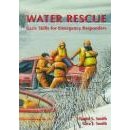All Articles
Accident Prevention & Safety
Industrial Equipment
Aftermarket Services
Industrial Hygiene and Safety
All-Terrain Vehicles (ATV / UTV)
Intellectual Property
Amusement Parks
Investigation & Surveillance
Animals
Law Enforcement
Appraisal & Valuation
Legal Issues
Archaeology - Archeology
Logistics - Reverse Logistics
Artificial Intelligence (AI) / Machine Learning (ML)
Maintenance
Attorney Fees
Materials
Branding - Brand Management
Medical Malpractice
Child Welfare
Meditation
Communication
Pain Management
Computer Forensics
Pharmaceuticals
Digital / Crypto Currency
Pharmacy & Pharmacology
Education & Schools
Premises Liability
Emergency Medical Services (EMS)
Psychiatry
Employment
Psychology
Ergonomics
Radiology
Fall Protection Solutions / Confined Spaces Safety
Relationships & Dating
Fires & Explosions
Security
Forensic Analysis
Social Issues
Forgery & Fraud
Structured Settlements
Healthcare Facilities - Hospitals
Telemedicine - Remote / Virtual Medicine
Hyperbaric Medicine
Toxicology
Immigration - Naturalization - Asylum
Yoga
More...

AQUATICS-SAFETY-PAGE ARTICLES MAIN PAGE
. Contact Us if you are interested in having your work published on our website and linked to your Profile(s).
All Articles
Amusement Parks
HVAC - Heating, Ventilation, Air Conditioning
Animals
Immigration - Naturalization - Asylum
Antitrust
Land Mapping - Surveying - Zoning
Arms - Guns - Weapons
Land Use
Artificial Intelligence (AI) / Machine Learning (ML)
Life Expectancy - Life Care Planning
Attorney Fees
Maintenance
Bacteria - Fungus - Mold Investigation
Market Research
Biomechanics
Medical Devices / Inventions
Blockchain Information
Medical Physics
Commercial Diving
Medical Records Review
Computer Forensics
Meditation
Corrosion
Mining
Crime Scene Investigation
Obstetrics - Gynecology (OBGYN)
Economics
Product Liability
Employment
Public Speaking
Exercise Equipment
Recreation & Sports
Eyewitness Testimony
Research Methodology
Failure Analysis
Slip, Trip & Fall
Feng Shui
Social Issues
Foot / Ankle Surgery
Taxation
Forensics
Telecommunication
Forgery & Fraud
Travel & Leisure
GIS - Geographic Information Systems
Trial Presentations - Demonstrative Evidence
Hazardous Materials
Waterproofing
Hotels & Hospitality
Yoga
More...
Featured Articles
There are no active articles here at this time. Please use the search bar, try another category, or contact us if you would like to contribute an article.
This Article is unavailable. Contact Us
Search articles by title, description, author etc.
Sort Featured Articles
Featured resources
Uncommon Perspectives on the...
by Prudence Gourguechon, MD
Water Rescue: Basic Skills for...
by David Smith, PhD
Expert Witnesses, Valuation, and...
by Weston Anson
Follow us










